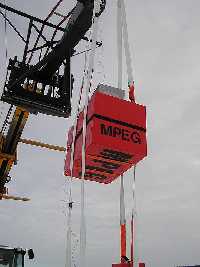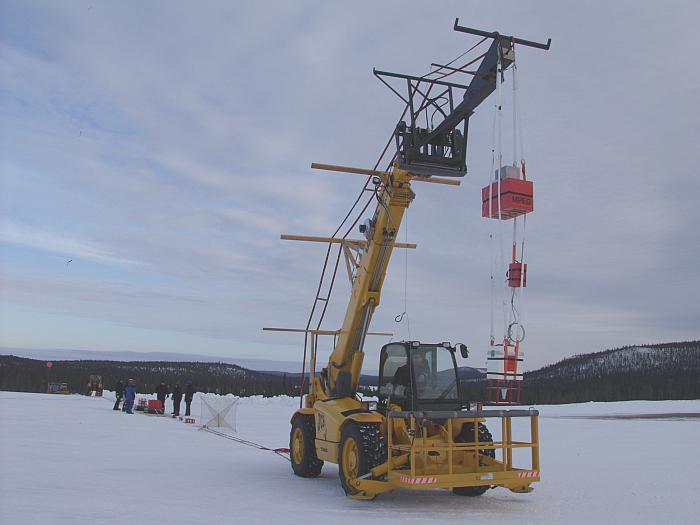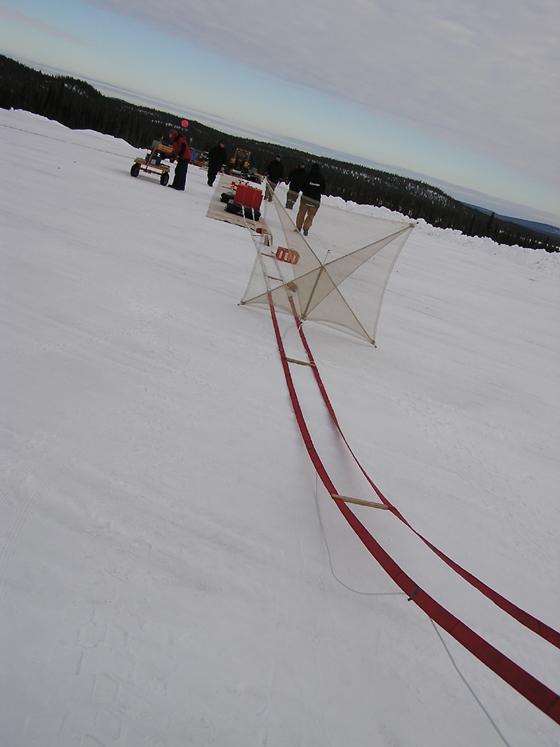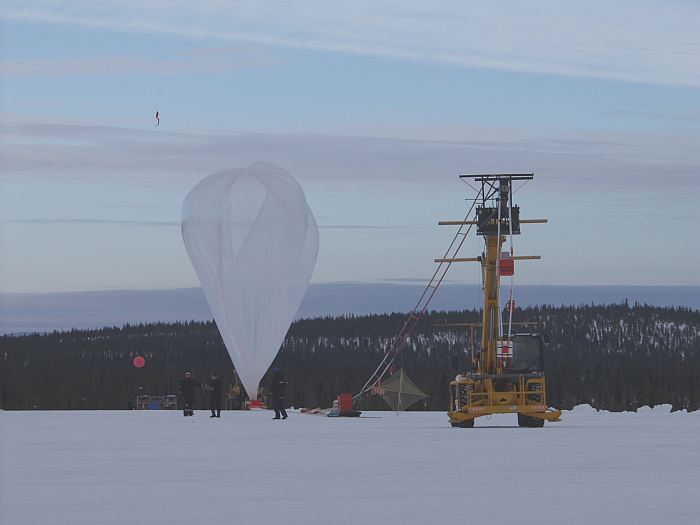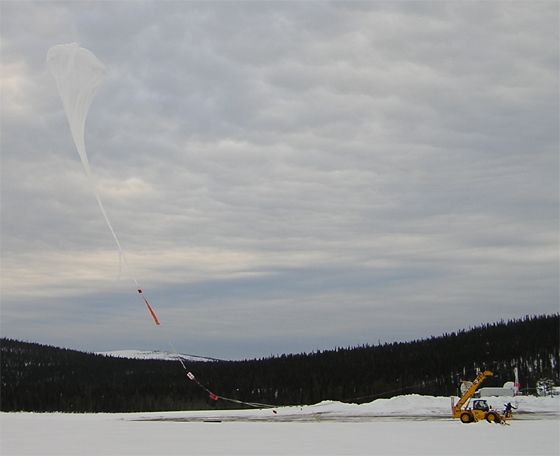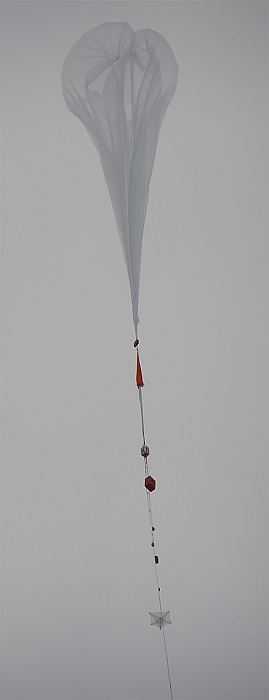Purpose of the flight and payload description
Sometime before a balloon campaign starts at Esrange every year is launched a balloon to test their technique and logistics systems. The students at Kiruna's different space related educations are offered the opportunity to send their own designed and built experiments with the balloon. The students are from the space engineering programmes at the Department of Space Science and from the technical high school programs.
Students from different years and courses are involved in the project, which means that different groups of students meet and get a chance to work together on the basis of their respective areas of competence. It is the students themselves who lead, design and build the experiments and the instruments destined for the balloon launch.
Most of the data to be collected during the balloon flight is used later in the courses.
This was the third flight of the project and involved the participation of students at Kiruna Space and Environment Campus togheter with pupils from Hjalmar Lundboms school and the space high school, Rymdgymnasiet. At left can be seen the gondola where the experiments are stored (click to enlarge).
Details of the balloon flight
Balloon launched on: 3/22/2005 at 15:21
Launch site: European Space Range, Kiruna, Sweden
Balloon launched by: Swedish Space Corporation (SSC)
Balloon manufacturer/size/composition: Zero Pressure Balloon model 10zl 10.000 m3
End of flight (L for landing time, W for last contact, otherwise termination time): 3/22/2005 at 19:40
Balloon flight duration (F: time at float only, otherwise total flight time in d:days / h:hours or m:minutes - ): 4 h 19 m
Landing site: 40 km W of the village of Vilhelmina, Sweden
Campaign: BEXUS
The balloon was successfully launched at 15:21 UTC on the 22 of March and reached a float altitude of 28,5 km at 16:50 utc.
After a flight of near 5 hours due to east, the cut down command was given at 19:40 UTC and the landing took place 43 km west of the village of Vilhelmina.
The experiences performed were:
Student's Gondolas
MPEG - Multi Purpose Experiment Gondola is a complete platform for small stratospheric balloon payloads. The whole project is a union of three different projects, describing the three main subsystems of the balloon platform
o LINA - Link Interface Node Administrator
o VECI - Versatile Experiment CAN Interface
o 3P - Platform Power Provider
Chemical Power High Altitude Experiment to study the behavior of Fuel cells and Zinc-air batteries under different atmospheric conditions.
GPV Solar Cell Flight Test a continuation of the work done on BEXUS II project to test newly developed solar cells in the harsh stratospheric environment.
Also on this flight were included experiences from the Upper secondary school of space ranging from to see how bass and gitar strings react to the extreme environment to probe Einstein's relativistic theories by sending a clock and comparing any time difference and from the school of Hjalmar Lundbom with two experiences one to examine what kind of leave beast can stand extrem freezedry and the other to study the seeds ability to grow after freezdry.
Esrange Gondola
Test of the E-Link system with maximum data load versus achieved flight range. One new ARGOS-GPS unit for positioning and localisation was also tested.
External references
- BEXUS project website Department of Space Science, Umeå university och Luleå university of technology
- Department of Space Science Luleå University of Technology
- List of balloons launched from ESRANGE SSC Space website (via Archive.Org)
1434If you consider this website interesting or useful, you can help me to keep it up and running with a small donation to cover the operational costs. Just the equivalent of the price of a cup of coffee helps a lot.

